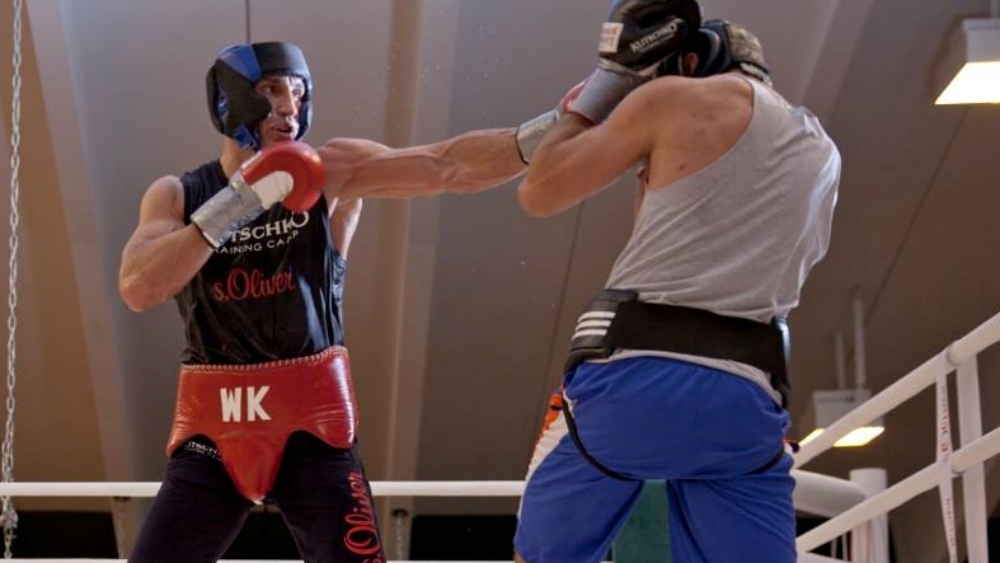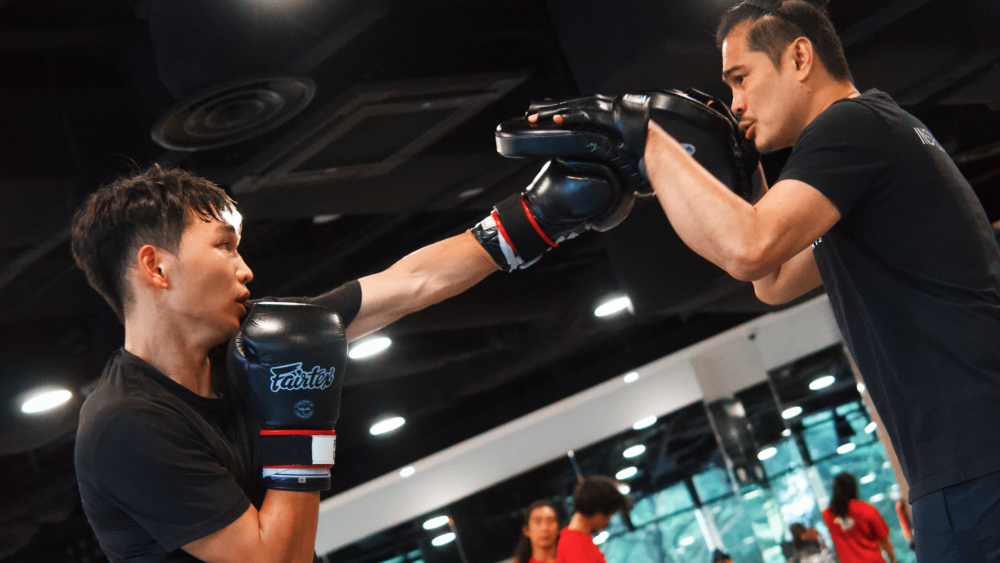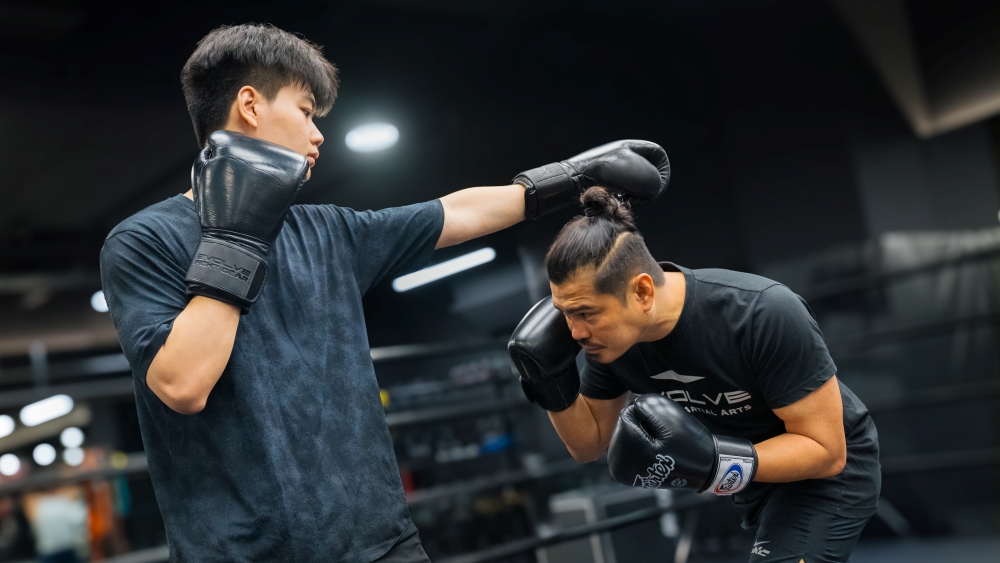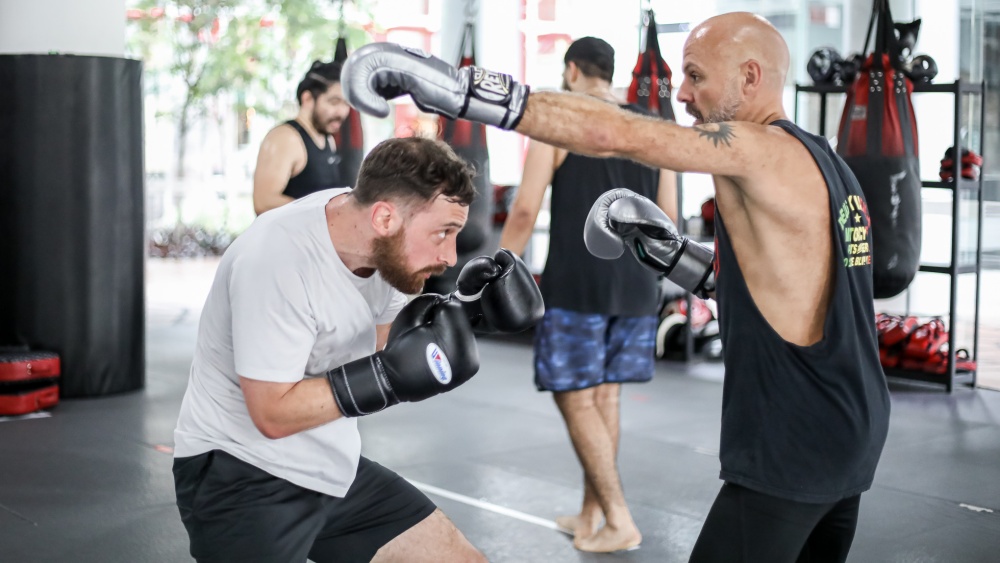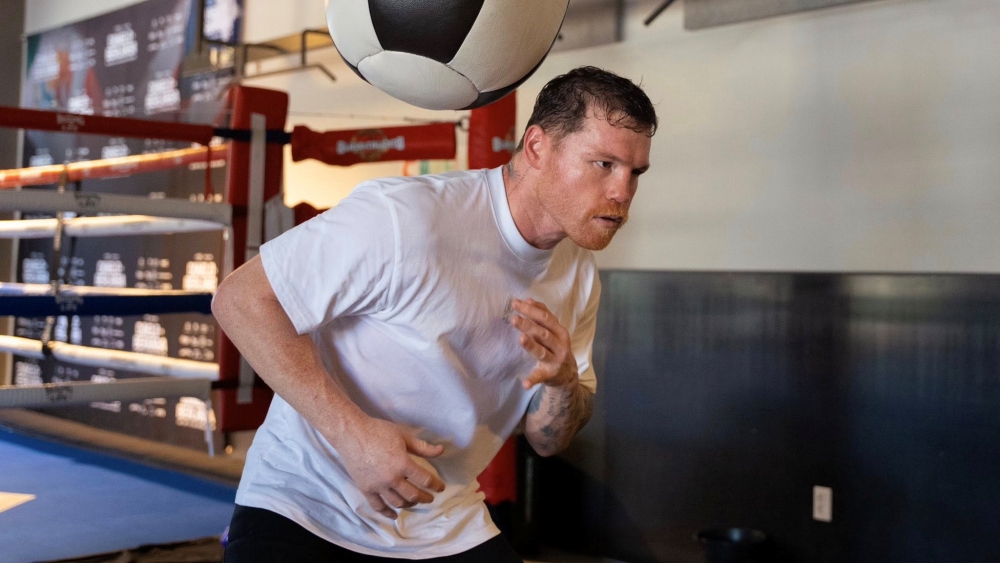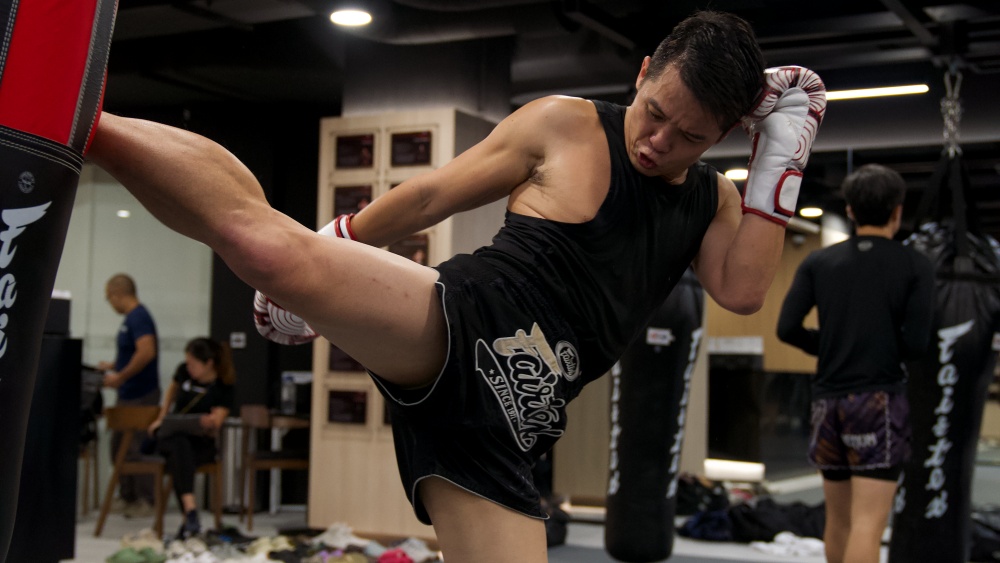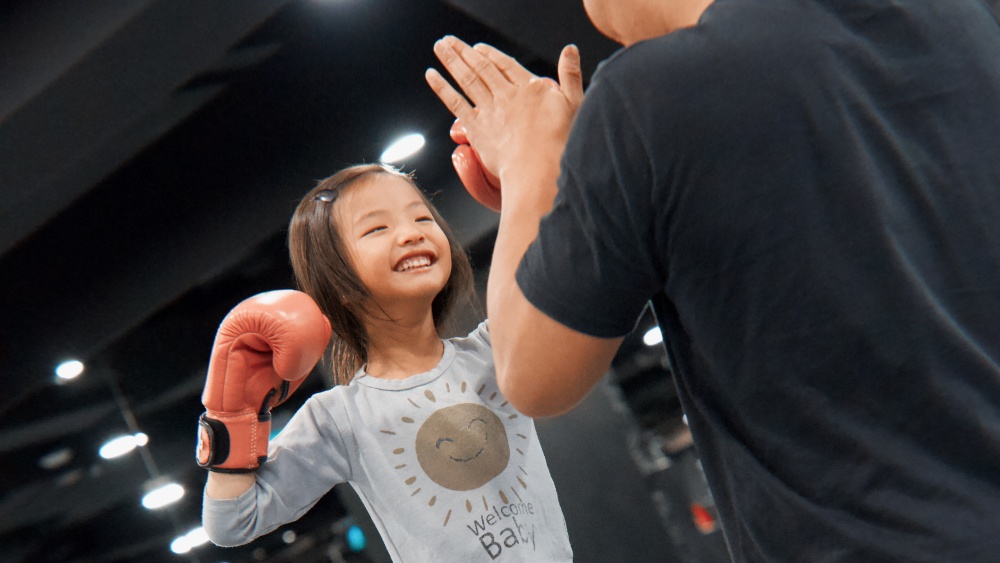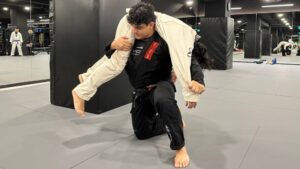In boxing, the long guard consists of an extended lead arm, with the rear hand held in a cross or high guard. The lead arm is used to catch, parry, trap, and frame the opponent’s punches, with the rear arm as a second layer of defense. Although the long guard is not commonly used in modern boxing, it has been used in the sport of boxing for over a century. The smaller gloves and added rounds of old-school boxing made the long guard the go-to for many boxers of that era. Today, Evolve Daily is pleased to share a guide on how to use the long guard for boxing.
Proactive Defense
The vast majority of boxers today are taught the high guard on their first day in the gym. While the high guard is a tried and true method for blocking a punch, it is not the optimal guard for all situations. The high guard is largely a reactive defense, which can be seen when fighters instinctively shell up after taking a clean hit. Blocking punches with the high guard also drains your stamina and body condition with each hit blocked. With the high guard, you are essentially trading damage to your head and body for damage to your hands and forearms, both of which are not very durable, relatively speaking. Fighters with very good eyesight and reaction times can utilize the high guard most effectively, as their inherent physical traits complement a high guard defense.
The long guard is especially useful for boxers who have not been gifted with incredible eyesight or reflexes. The long guard allows your lead arm to continuously make contact with your opponent, giving you an enhanced sense of proprioception. For example, a boxer may extend their long guard to make contact with their opponent’s lead hand, forearm, or shoulder. As long as they maintain contact with their opponent, the boxer can feel when any motion is starting, be it a punch or block. This neutralizes half of an opponent’s arsenal and makes it easier to predict, and react, to their rear-side punches as well.
Lead Hand Control
Controlling an opponent’s lead hand is a highly effective way to stifle their boxing ability. A successful long guard effectively robs your opponent of their jab and lead hook, leaving them with predictable rear-side punches.
Boxers that have a well-developed long guard game will be able to use lead hand control to manipulate their opponent’s posture, guard, and even footwork in the ring. An example of this would be using your forearm to pin your opponent’s arms against the front of their body. Your opponent would most likely move backward since they need to unpin their arms to punch. You can use long guard tactics like this to force your opponent to move where you want them to be.
There are numerous types of lead hand controls; we will go over the most common ones below:
- Taps are light touches to your opponent’s lead hand. It can help set up other more physical long-guard tactics.
- Parries are when you divert the trajectory of an opponent’s punch, usually with an open hand. Parrying is preferable to shielding since a successful parry avoids impact entirely and compromises your opponent’s balance. One key aspect of parrying is to avoid force on force. Instead of meeting your opponent’s straight punches head-on, make contact from the side of their arm. This will use their momentum against them. The harder they punch, the more off-balance a successful parry will leave them. Jeff Chan demonstrates basic long guard parrying concepts in the video above. Although the video is meant for a MMA context, the same principles apply to boxing as a standalone sport.
- Framing is using an extended arm or forearm wedge to create a barrier between you and your opponent. Generally, you will be making contact with your opponent’s shoulder, chest, or head when framing. Framing halts forward momentum, reducing your opponent’s ability to throw power punches. Using an extended arm is often called posting while using your forearm horizontally to frame against your opponent’s arms is called pinning. These techniques are highly effective at controlling your opponent’s movement and punch options.
The beauty of the long guard is in its versatility. It can be added to any boxer’s repertoire, and serve to elevate their game. Taller boxers, or those with reach advantage, can use the long guard to jab an opponent to victory from the outside. This style of boxing is especially effective for those boxers that have a hard rear cross, as the long guard shifts the majority of a boxer’s weight onto their rear leg, keeping their hip loaded. Boxers that have utilized this style especially effectively include Wladimir Klitschko, Tyson Fury, and Dmitry Bivol.
The long guard also has a place in the arsenal of a shorter boxer. When used properly, a shorter boxer can use the long guard to rob a taller opponent of their most important punch – the jab. For a shorter boxer, neutralizing the jab means that they can close distance to their preferred range more effectively and safely. The long guard can also be used by a shorter boxer after punching to exit range safely.
The most prominent shorter boxer who uses the long guard is Gervonta “Tank” Davis. Tank’s mastery of the long guard is in part what allowed him to beat Ryan Garcia with relative ease. Tank used his lead hand from southpaw to control Garcias’ lead hand, neutralizing Garcias’ jab and infamous left hook. This only left Garcia his right cross, which was predicted by Tank. When Garcia inevitably threw his right cross, Tank slipped to the inside and countered. Tank then used the long guard less, knowing Garcia would use the opportunity to throw his left hook. Tank ducked under the hook, countering with a liver blow that ended the fight. The long guard was paramount in Tank reading his opponent and setting up counters.
Conclusion
The long guard is a deep part of boxing that is less common today, giving the boxers that do use it a powerful advantage. Incorporate the discussed concepts in your training and try using the long guard during your next sparring session. Happy Training!
You may also like:
